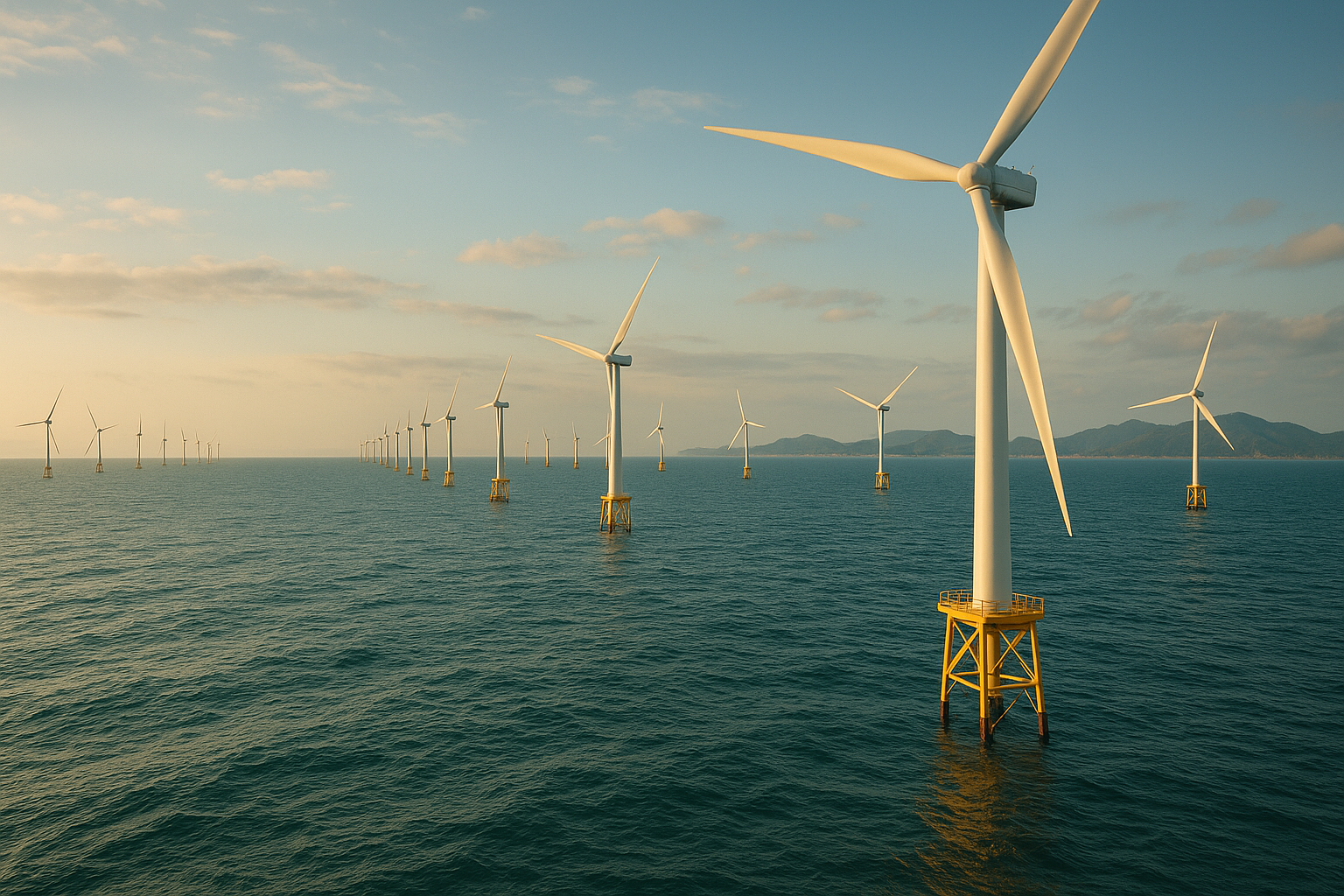New Blueprint Aims to Make Vietnam a Global Leader in Offshore Wind by 2050
The World Bank’s 2025 report outlines a two-stage, private sector-led framework to unlock Viet Nam’s 600 GW offshore wind potential, aiming for 6–17 GW by 2035 and up to 139 GW by 2050. It calls for regulatory reforms, SOE-led pilots, and global financing to make Viet Nam a clean energy leader.

A landmark World Bank report lays out a bold and structured roadmap to unlock the country’s vast offshore wind potential. Produced in collaboration with the Energy Sector Management Assistance Program (ESMAP), the International Finance Corporation (IFC), and supported by technical advisors BVG Associates and Baker McKenzie, this June 2025 publication marks a decisive moment in Vietnam’s clean energy transition. With over 600 GW of technical offshore wind potential and targets of up to 139 GW by 2050, Vietnam has the natural resources and now, the policy blueprint, to become a major player in the global wind energy market.
The report arrives after years of regulatory delays that caused many international investors to hesitate. While some near-shore projects moved forward under a Feed-in-Tariff regime, far-shore developments stalled due to legal ambiguity. Now, with sweeping policy reforms enacted through the 2024 Electricity Law and accompanying Decrees 58 and 65, a clear legal and institutional foundation is in place. The revised Power Development Plan (PDP8), approved in April 2025, sets near-term goals of 6 to 17 GW by 2035 and ambitious long-term goals of up to 139 GW by 2050, including 240 GW for hydrogen and new energy production.
A Two-Stage Roadmap to Empower Private Investors
The World Bank’s proposed development model leans heavily on international best practices, particularly the two-stage competitive model used in the UK, US, and Australia. Under this system, private developers first compete for Survey Licenses (Stage 1), which grant implied site exclusivity. These licenses, issued by the Ministry of Agriculture and Environment (MoAE), are currently valid for three years, but the report recommends extending them to five years to support high-cost, high-risk survey work. Stage 2, led by the Ministry of Industry and Trade (MOIT), involves a tariff-based bidding competition. Winning bidders are granted Investment Agreements, which secure long-term Power Purchase Agreements (PPAs) and guaranteed grid access.
To ensure sufficient competition and project maturity, the report recommends awarding 8 GW of Survey Licenses in the first cycle, from which 4 GW will be selected for development. This capacity complements the 2 GW to be led by State-Owned Enterprises (SOEs), bringing the total in line with the PDP8’s 6 GW 2035 target. The two-stage process balances investment risk with price competitiveness and offers developers the certainty needed to commit to extensive surveys and early-stage design.
SOEs to Lead, But Private Sector to Scale
While private capital will drive the bulk of offshore wind installations, SOEs are positioned to lead the way through two large-scale pilot projects of approximately 1 GW each. These pilots will be approved directly by the Prime Minister and are exempt from the competitive bidding process. The intention is to use SOEs to troubleshoot the regulatory environment and build domestic capacity, including grid coordination, harbor readiness, and permitting systems. Although initial development may be funded on-balance-sheet, the report stresses that full-scale construction will require non-recourse or limited-recourse project financing.
Vietnam’s domestic banking sector, thinly capitalized relative to international standards, lacks the scale to fund multibillion-dollar offshore wind projects alone. Therefore, international financiers will be critical. To attract them, the report calls for enhancements to the bankability of PPAs, including mechanisms for currency protection, force majeure, termination clauses, and dispute resolution. The ability of SOEs to access concessional financing and secure international co-investors will set the tone for future private sector involvement.
Infrastructure and Regulatory Reform: Keys to Success
One of the most critical challenges Vietnam faces is grid and harbor readiness. The 2024–25 solar boom revealed systemic risks: overloaded transmission lines and curtailment rates exceeding 20 percent in some regions. Offshore wind, which is even more capital-intensive, cannot afford similar setbacks. The report underscores the importance of aligning Marine Spatial Planning (MSP) with grid connection strategies and recommends designating at least 10 GW of Development Blocks in the next phase of the MSP, 2 GW for SOEs, and 8 GW for private developers.
The report also advocates lowering regulatory barriers that currently inflate project costs. These include excessive minimum capacity density thresholds, 5 MW/km² in early development and 20 MW/km² for construction, far higher than international norms. Recommendations call for reductions to 3 MW/km² and 6 MW/km², respectively. Further reforms include extending Survey License durations, delaying mandatory data disclosures until after Investment Agreements are signed, and creating more flexible PPA pricing structures to accommodate inflation and global commodity swings.
A Carefully Timed Path to 2035 and Beyond
The implementation timeline is thoughtfully sequenced to ensure predictability and build investor confidence. The Planning Stage, including MSP updates and grid studies, is set to conclude in 2025. Survey Licenses will be awarded in 2026, followed by price competitions in 2028. Construction is expected to begin around 2029, with projects commissioned between 2033 and 2035. The process is designed to cycle every two to three years, providing a continuous pipeline of opportunities to reach and potentially surpass the 2050 targets.
By combining clear policy direction, institutional coordination, private sector incentives, and global financing standards, this framework offers Vietnam a realistic yet ambitious path to become a global offshore wind leader. The strategy exemplifies how an emerging market can leapfrog into clean energy leadership, provided it balances visionary planning with practical reforms and maintains strong public-private collaboration.
- FIRST PUBLISHED IN:
- Devdiscourse










